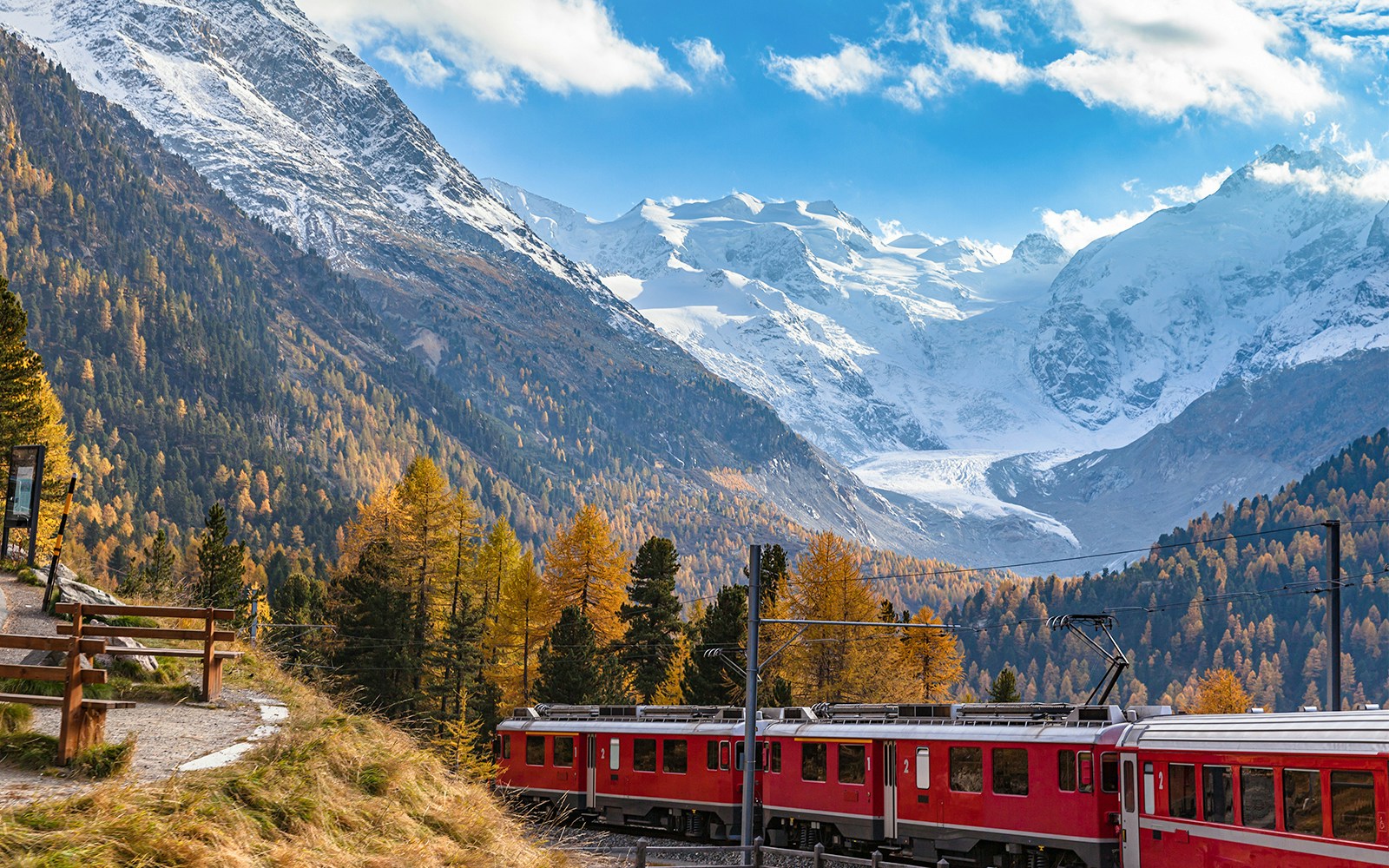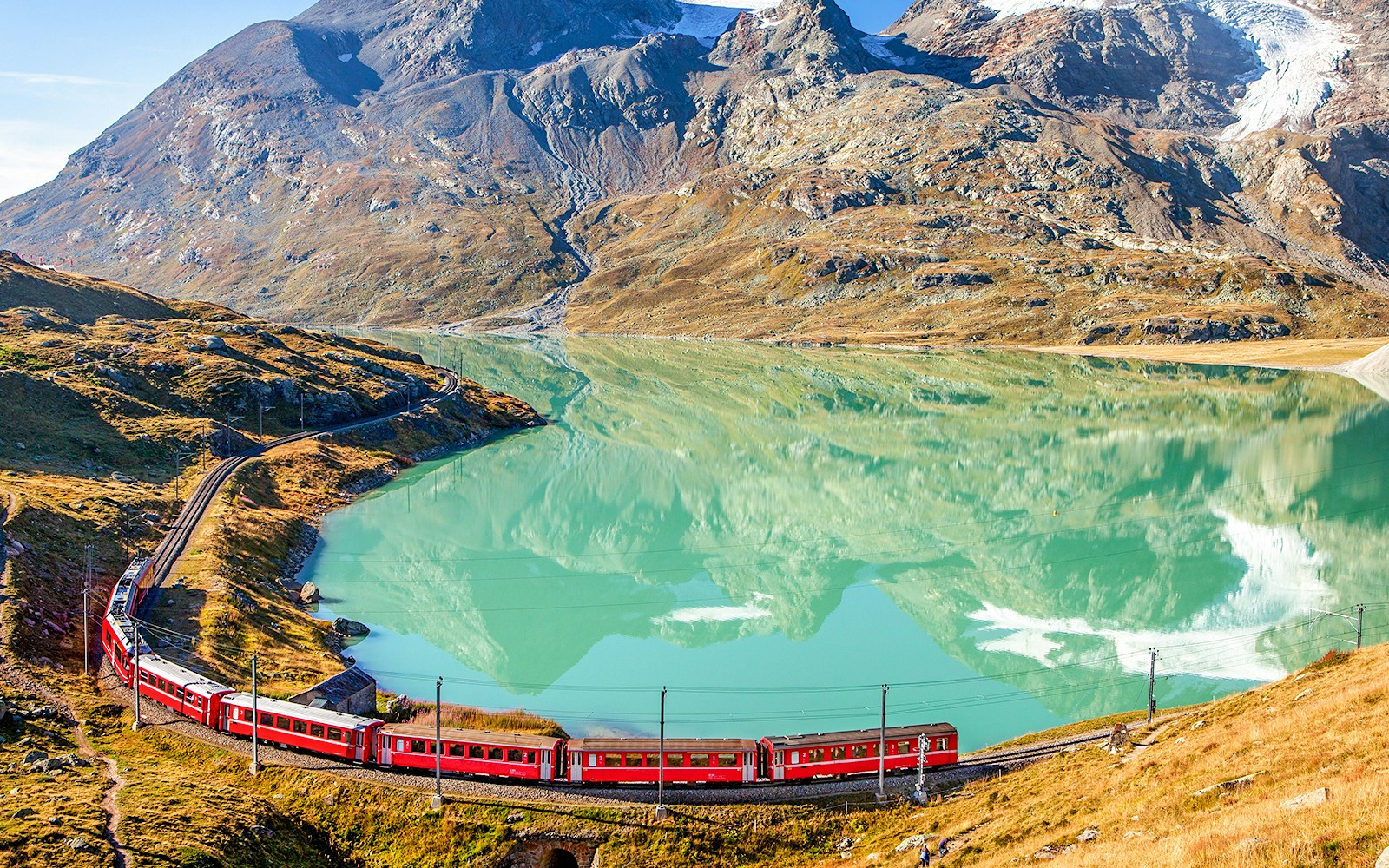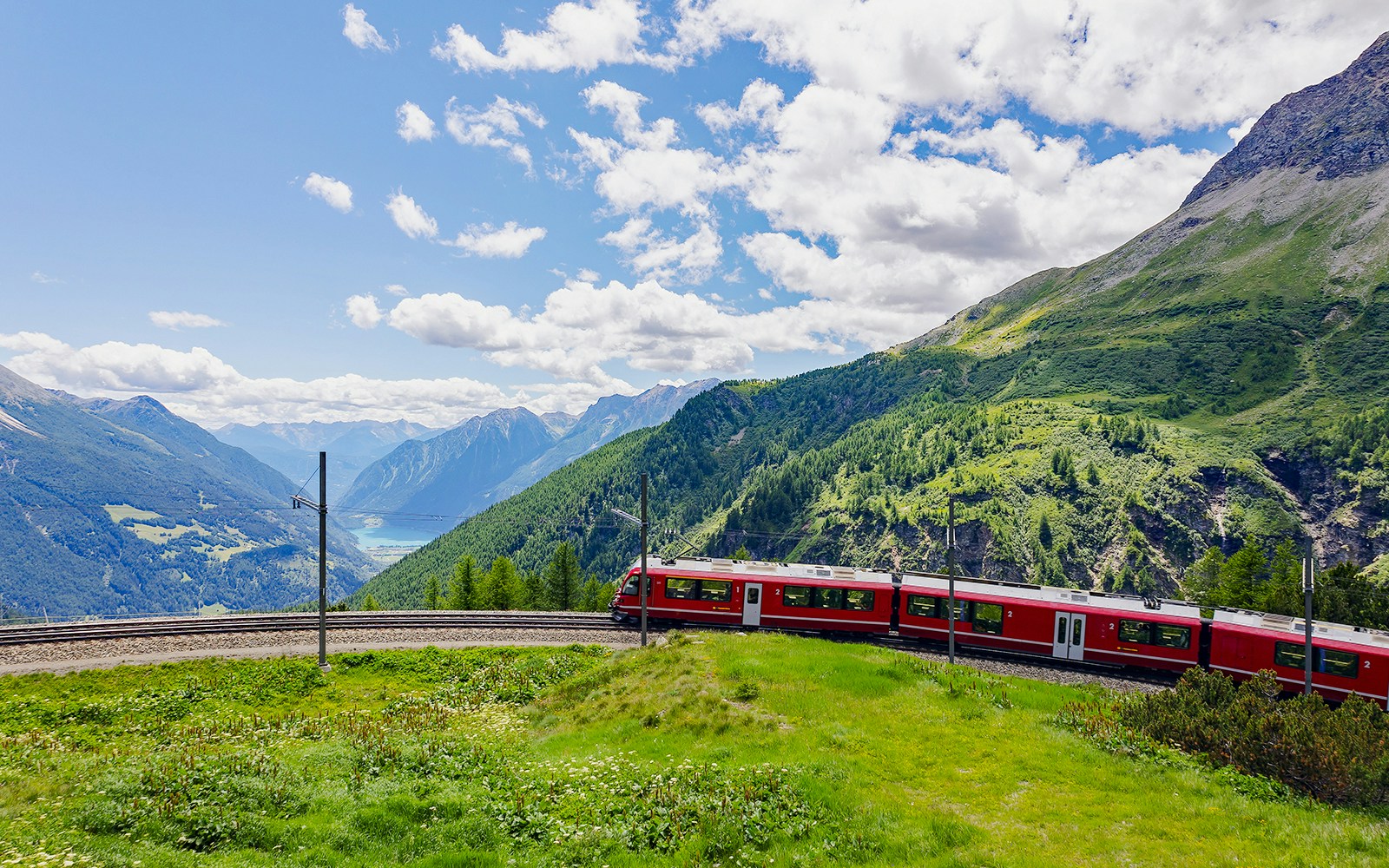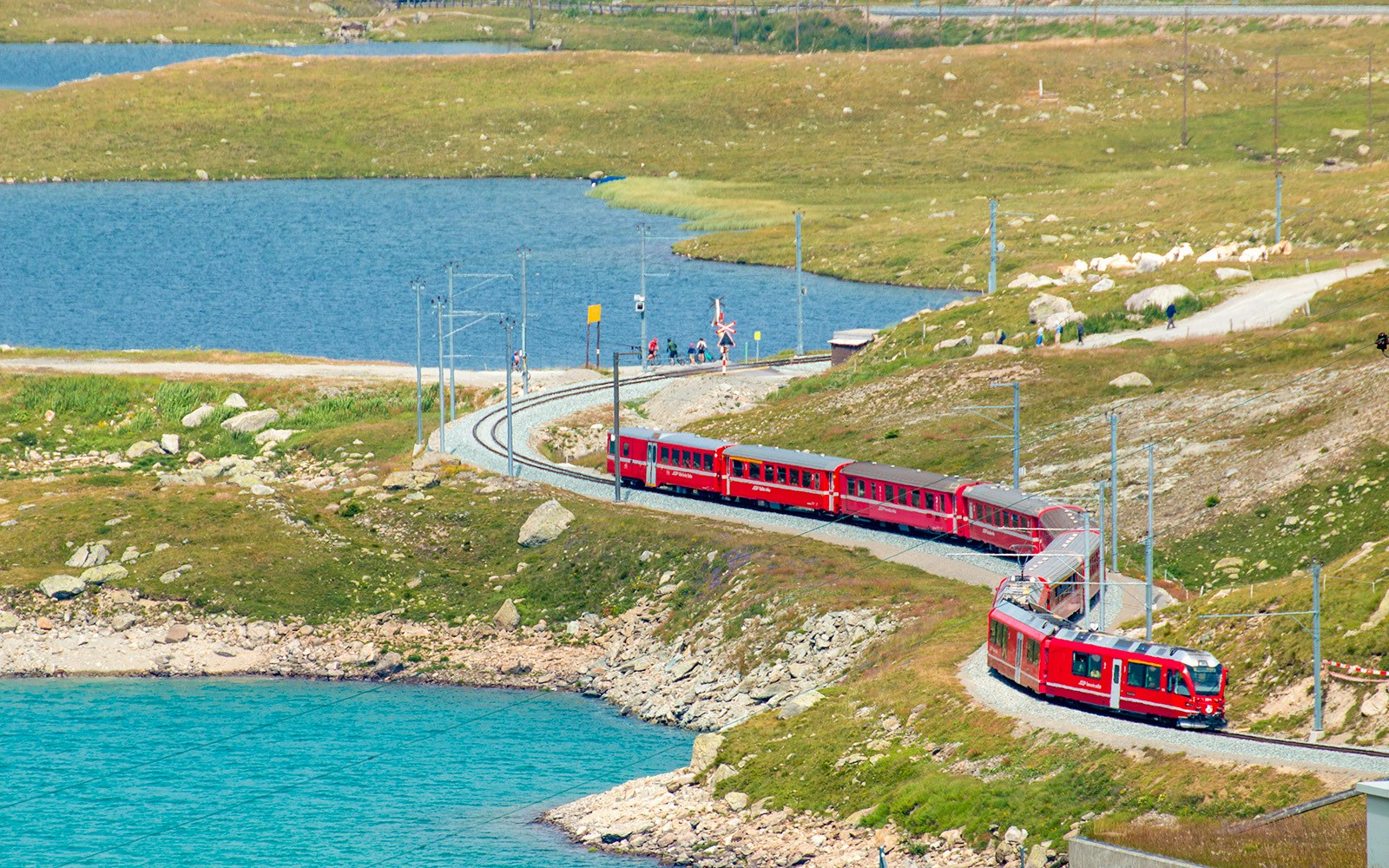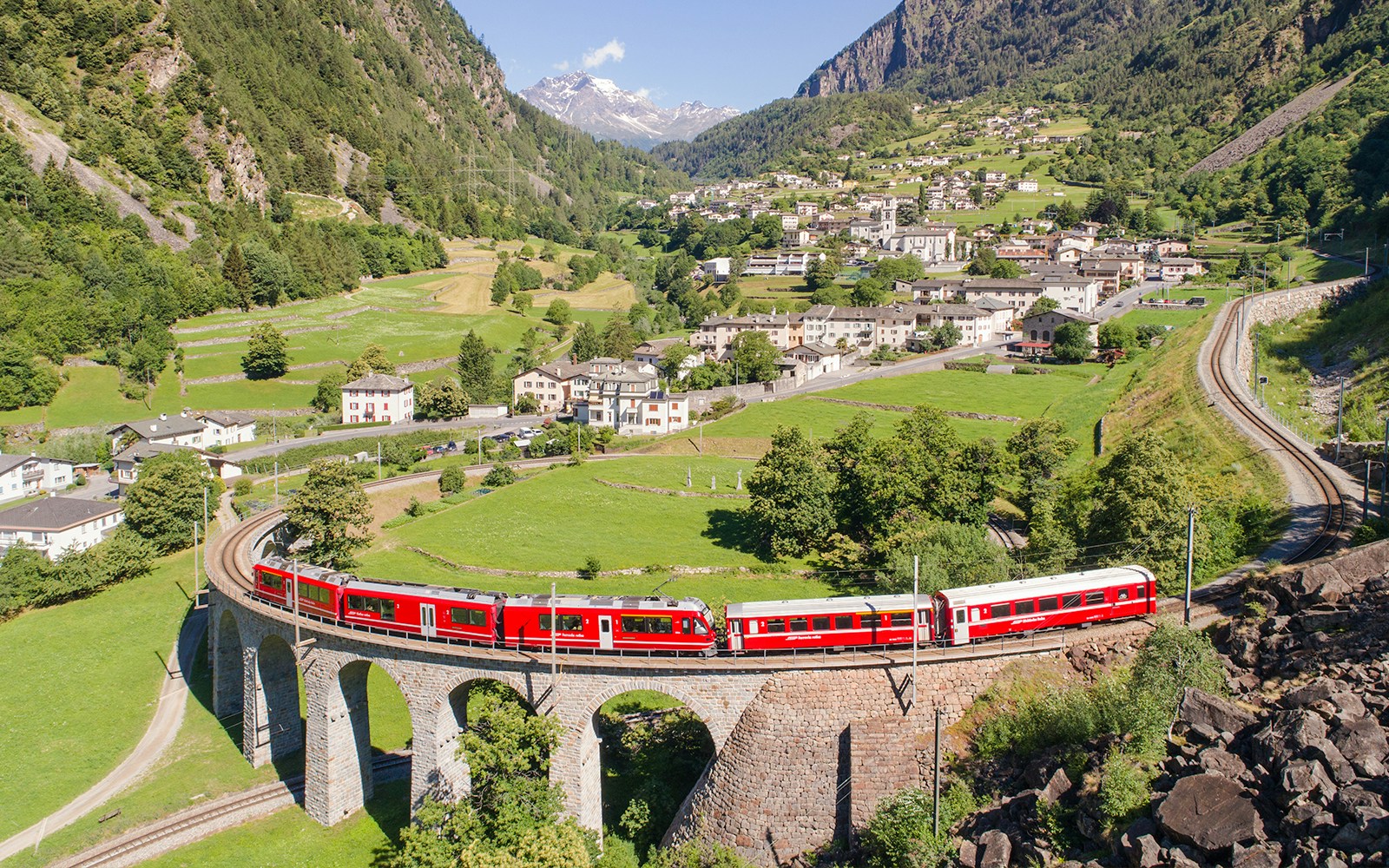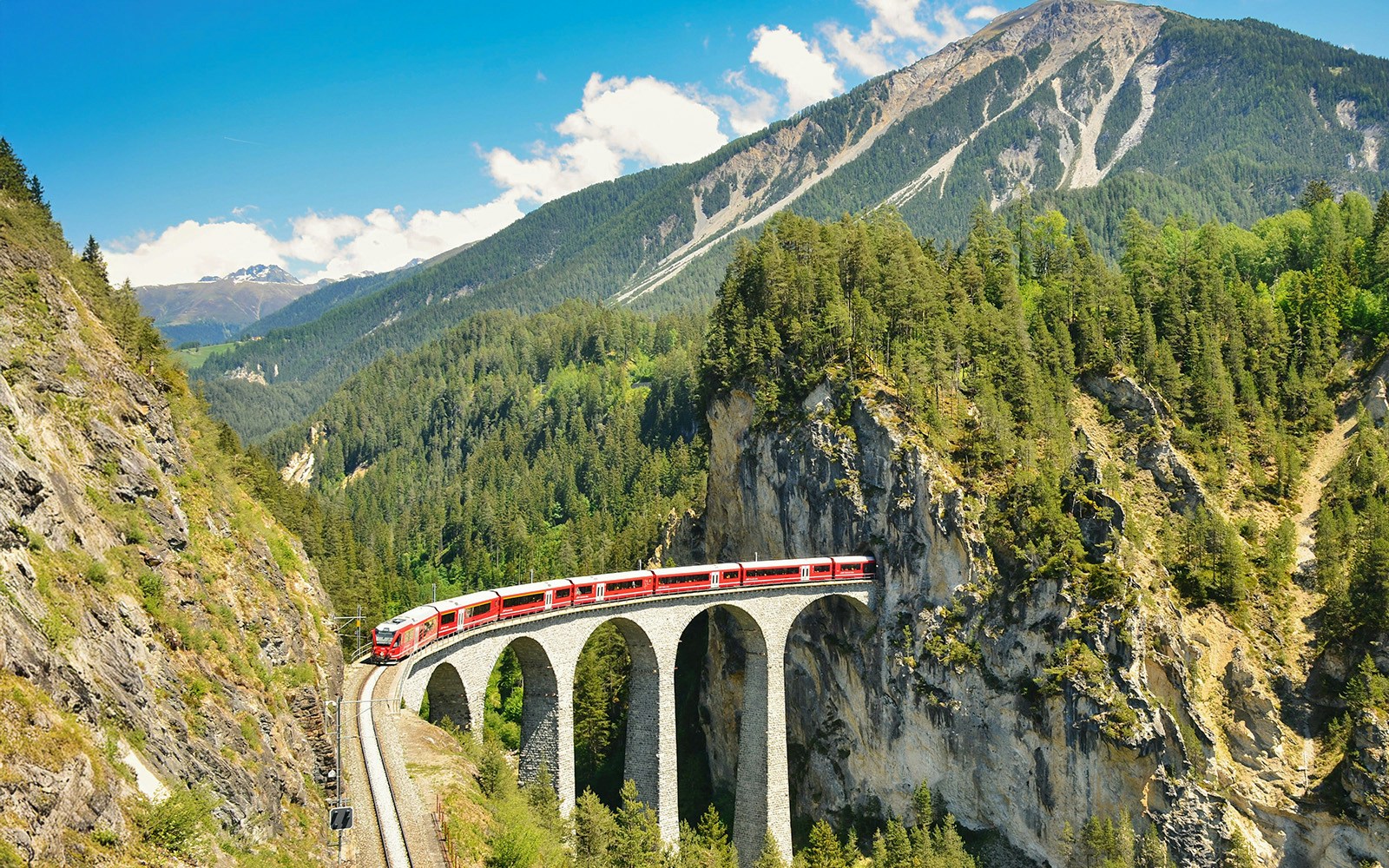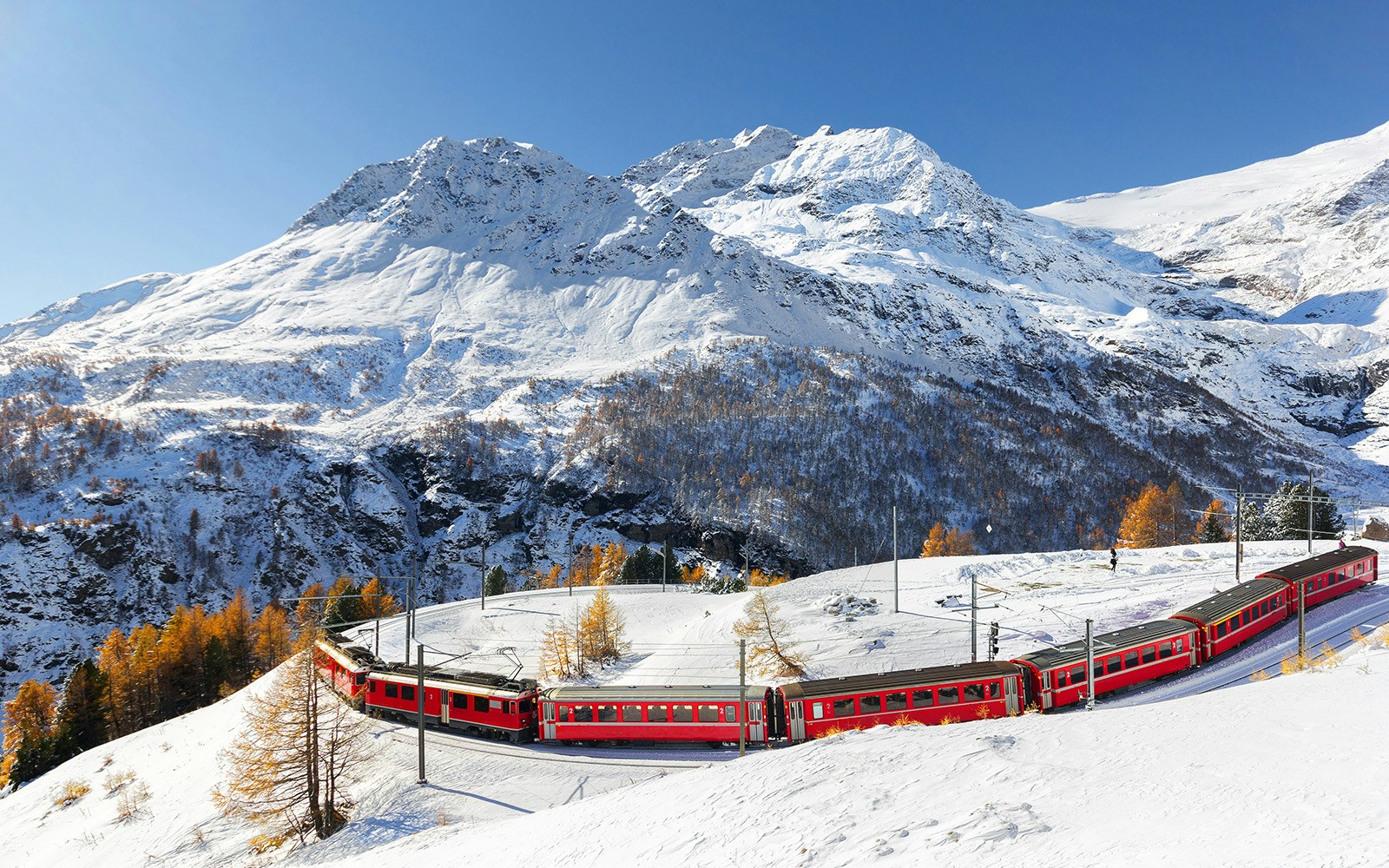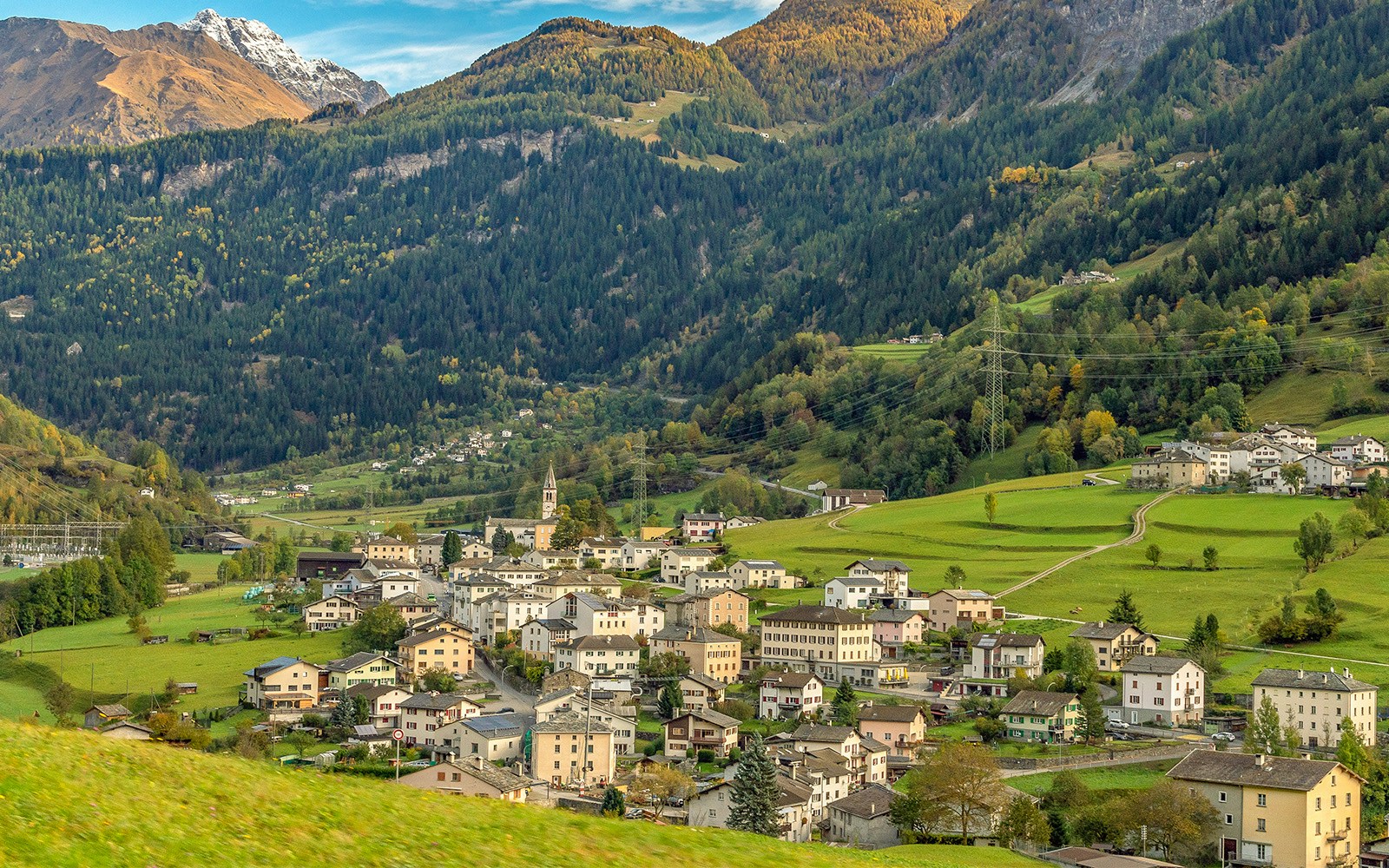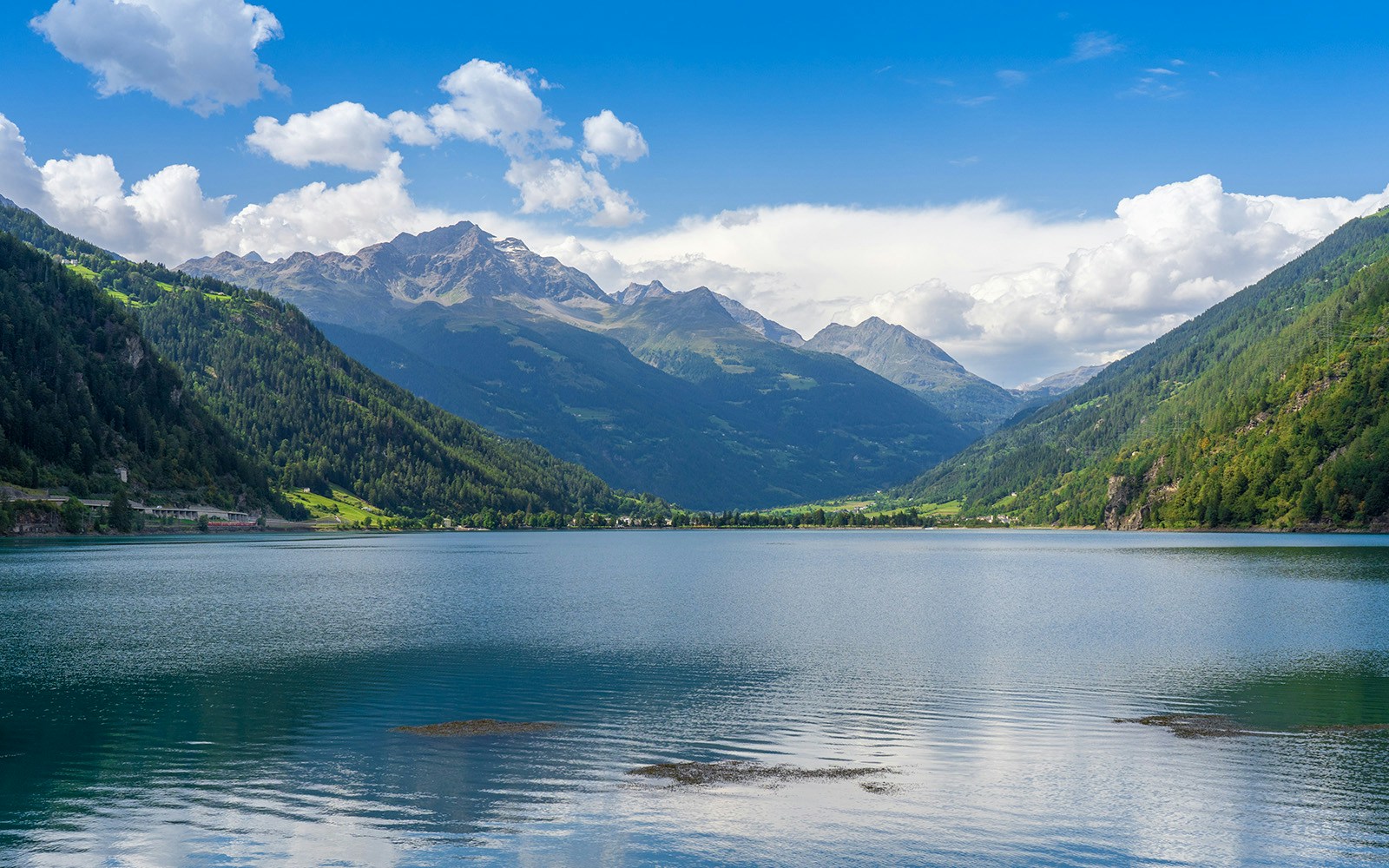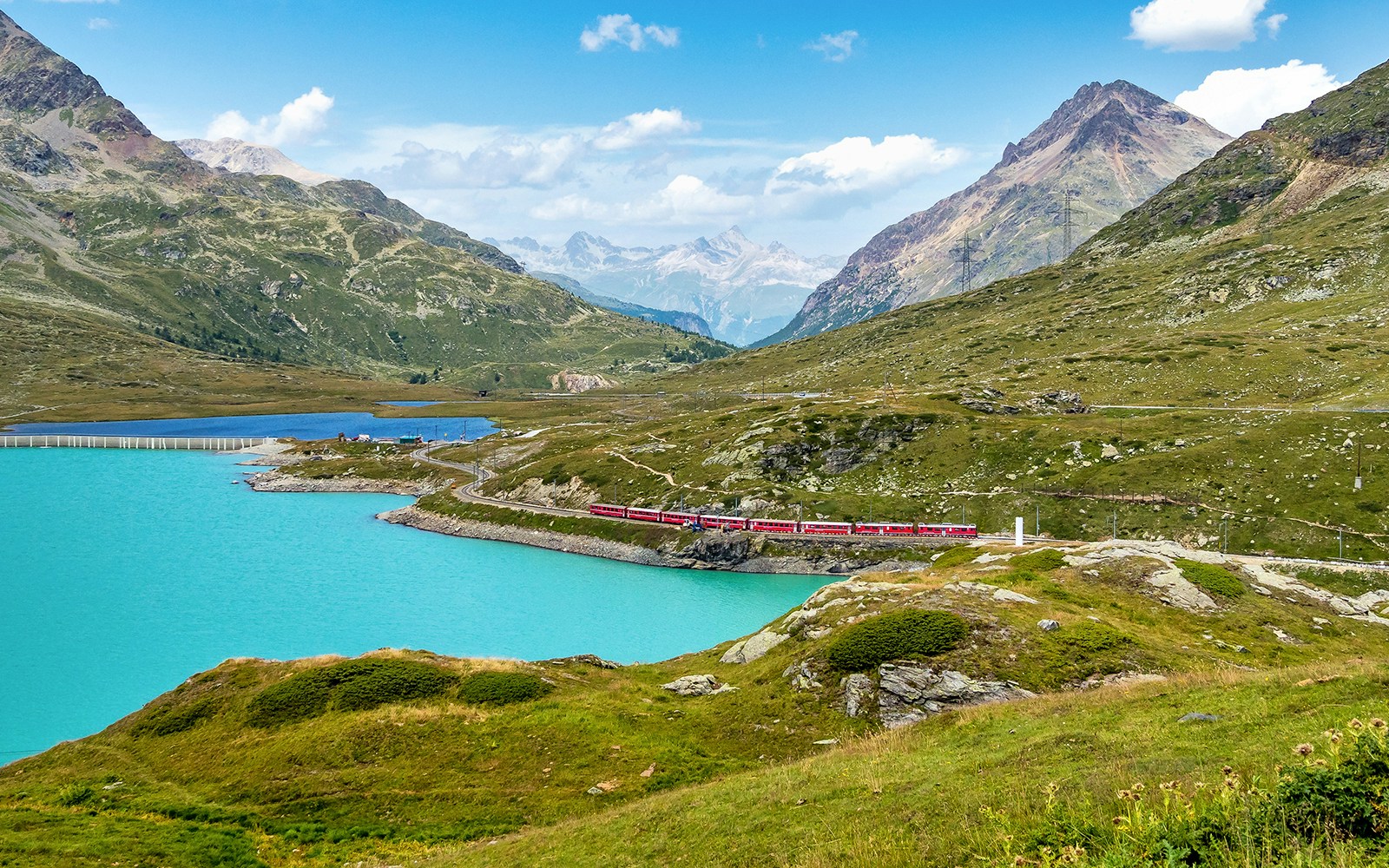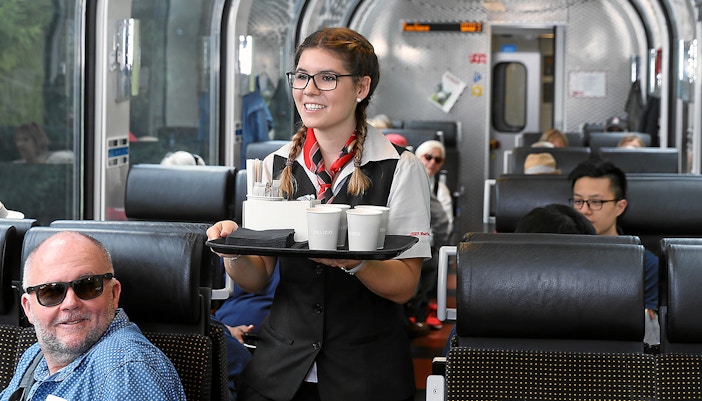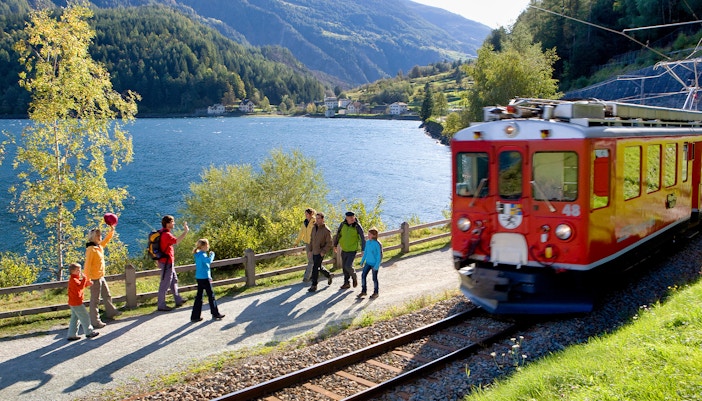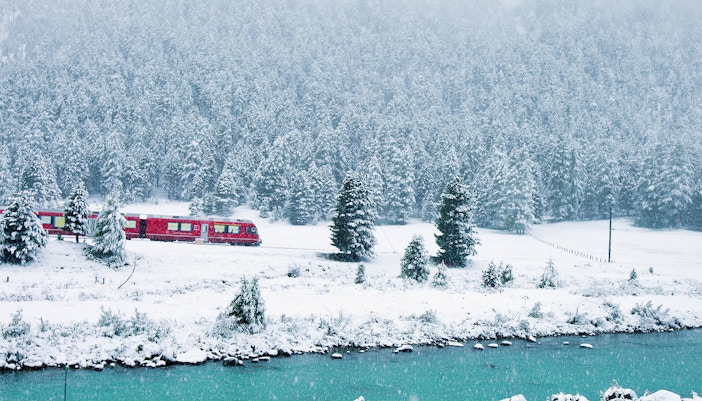As the Bernina Express ascends through the Alps, you’ll catch gorgeous views of the Morteratsch Glacier, one of the largest in the region. Its icy blue surface stretches for miles, framed by towering peaks, making it one of the most stunning sights on the journey.
Bernina Express | A window to the Alps
Bernina Express in a nutshell
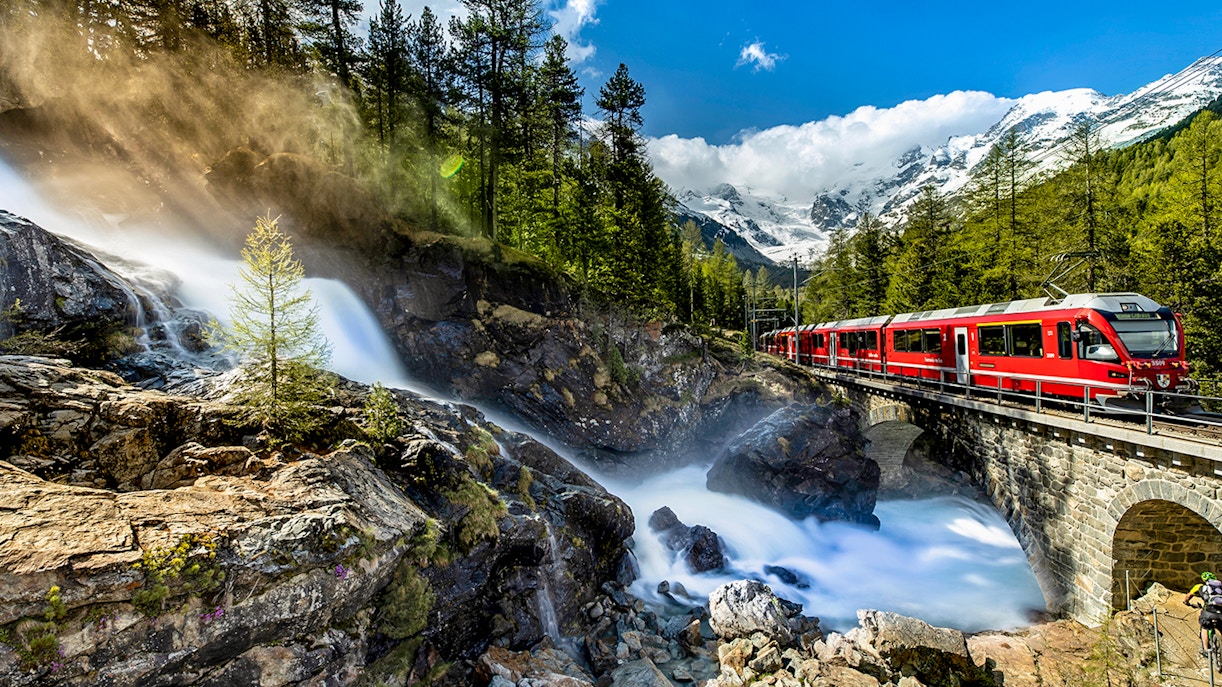
Starting point: Chur
Last stop: Tirano
Frequency: Varies with the season & route
Duration: 4 hours
Distance: 144 km
Average speed: 24 km/hr
Stops: Varies with the route
Seat types: First Class, Second Class
Why explore Switzerland with the Bernina Express
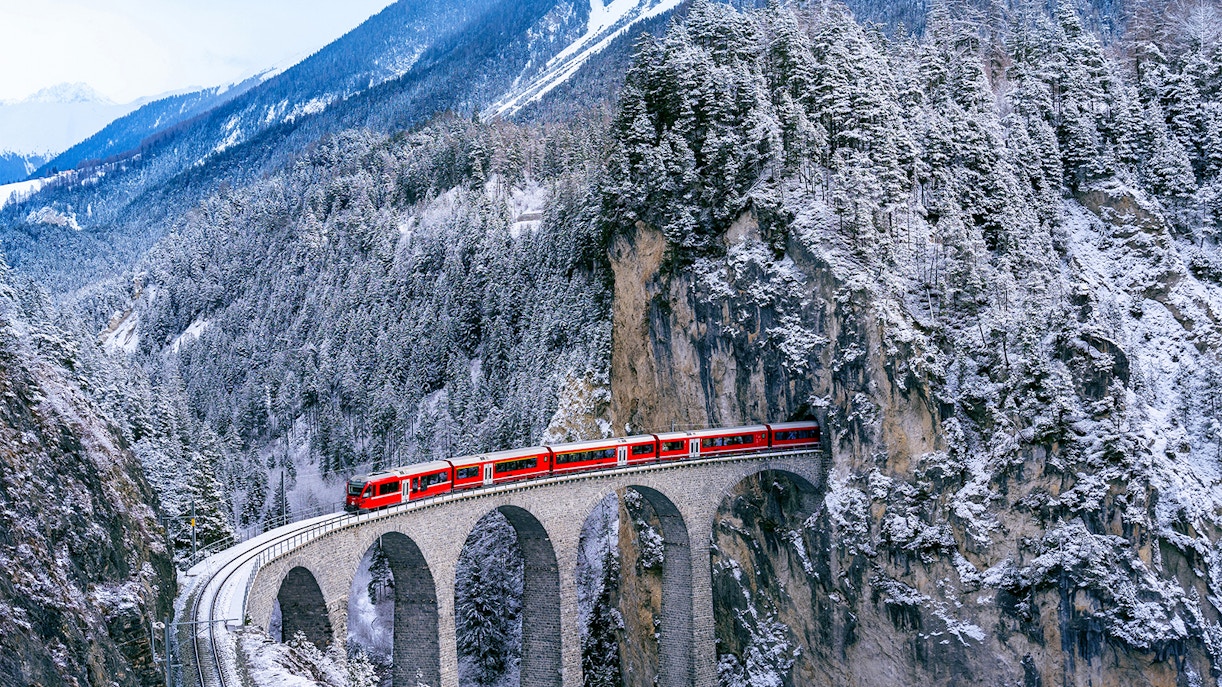
- Rare Swiss views: Travel through some of the most awe-inspiring landscapes in Switzerland, including towering snow-capped peaks, turquoise alpine lakes, and lush green valleys.
- A mix of glaciers and palm trees: The journey takes you from high-altitude glaciers in the Alps to the Mediterranean-like climate of Tirano, Italy.
- UNESCO World Heritage status: The Bernina Express is part of the Rhaetian Railway, recognized as a UNESCO World Heritage Site for its incredible engineering and cultural significance.
- Engineering marvel: The route includes architectural highlights such as the iconic Landwasser Viaduct and spiraling tunnels that showcase human ingenuity.
- Accessible adventure: An accessible adventure for all ages, the Bernina Express provides a relaxing and hassle-free way to explore remote areas—no strenuous hiking required!
Book your Bernina Express tickets
Bernina Express view: What to spot from the train ride
Morteratsch Glacier
Bernina Express: A seasonal guide
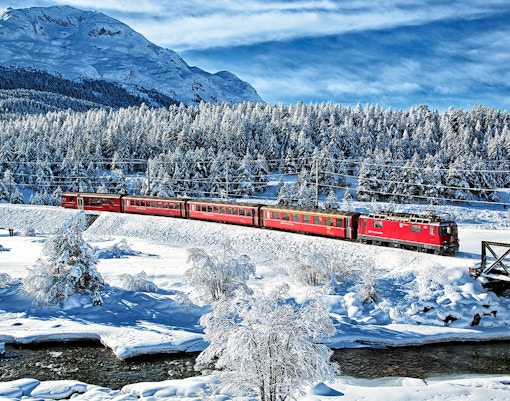
Winter (December to March)
The Bernina Express moves past snow-blanketed landscapes, frozen lakes, and charming alpine villages. Since it gets dark early in winter, it's a good idea to board the train earlier in the day.
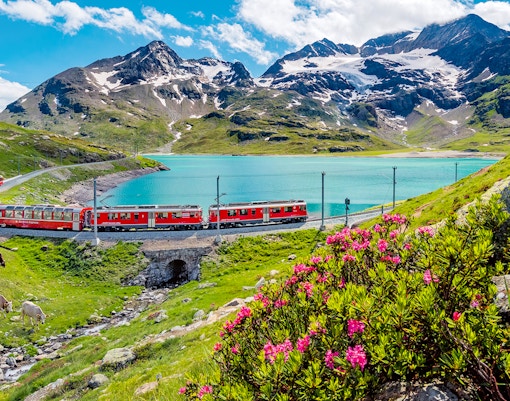
Spring (April to early June)
In spring, the Bernina Express route offers some great views. Colorful flowers bloom in the meadows, and snow starts to melt off the mountains. The valleys turn green, giving the whole area a fresh, lively feel.
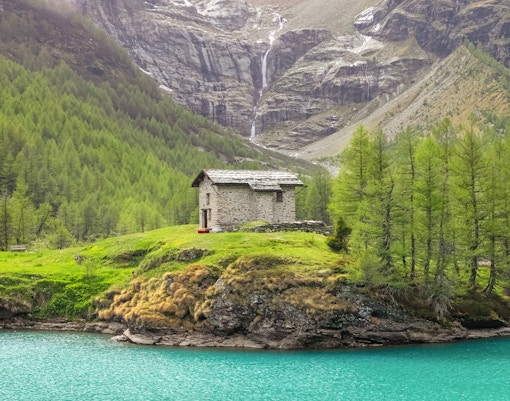
Summer (mid-June to mid-September)
Summer brings endless blue skies, warm weather, and vibrant green landscapes. With alpine meadows in full bloom and sparkling lakes, the Bernina Express reveals the region’s natural beauty at its peak. It's also a great time for extended daylight hours to soak in the panoramic views.
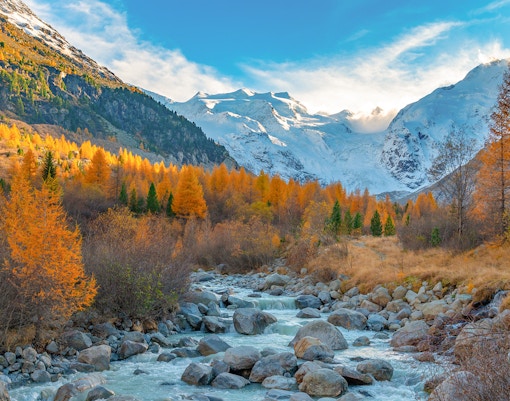
Autumn (late September to mid-October)
In autumn, the Bernina Express gives you great views of golden larches, sparkling lakes, and snow-capped peaks. The weather’s still comfortable, making the ride enjoyable, and with fewer crowds than in summer, it’s a more relaxed experience.
Bernina Express bus
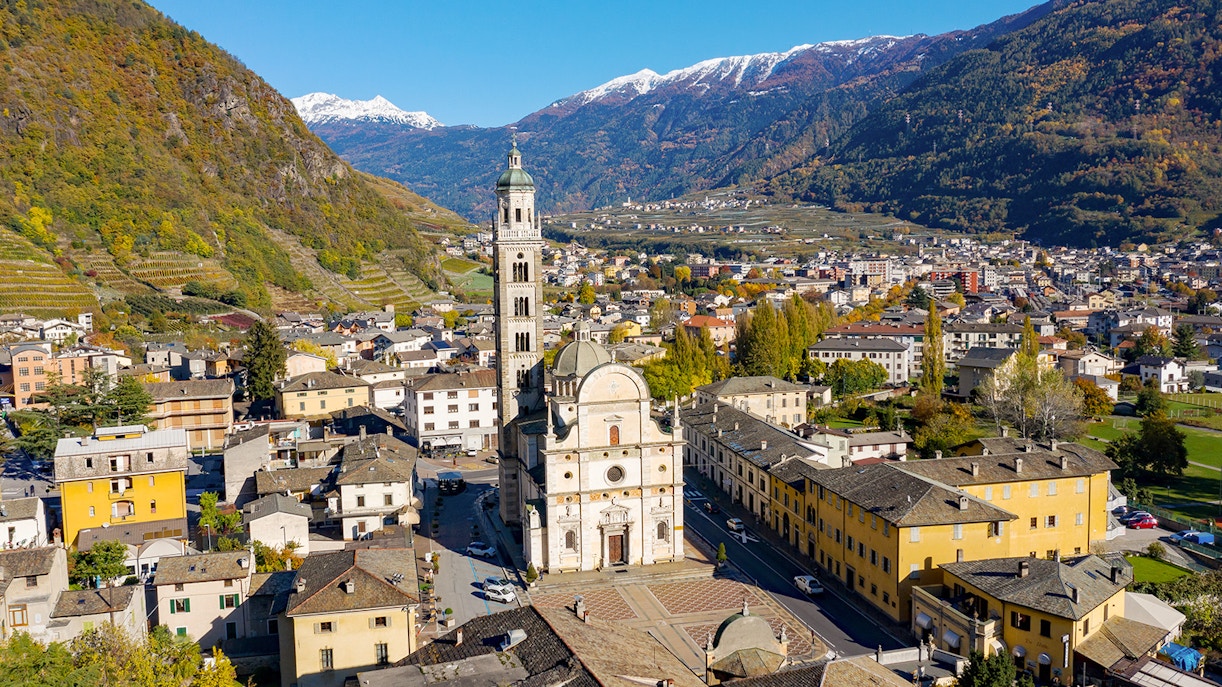
Bernina Express’s last stop is Tirano, which is in Italy. For an extra dose of Italian flair, extend your Bernina Express adventure by hopping on the iconic red Bernina Express bus from Tirano. This scenic route winds through the sprawling vineyards of Valtellina, charming villages, and the shores of Lake Como before arriving in Lugano. From there, a high-speed train ride through the Gotthard Base Tunnel takes you seamlessly back to the German-speaking part of Switzerland.
Frequently asked questions about the Bernina Express
Yes, there are. A mobile trolley service that passes through the train offers snacks and drinks.
First Class features more spacious seating and larger panoramic windows, providing an enhanced experience for enjoying the scenic views. Second Class is more economical but still offers excellent views and comfort with slightly smaller windows and seating.
Yes, you can travel with luggage. There are designated storage spaces for larger suitcases, and smaller bags can be stored in overhead compartments or at your seat. Be sure to label your luggage for easy identification.
Yes! The Bernina Express offers a digital travel companion called "InfoT(r)ainment." This free service provides fascinating insights about the train and the UNESCO World Heritage route, accessible directly on your smartphone for an engaging journey.
No, meal bookings are not necessary. Since the train offers a trolley service with snacks and drinks, you can purchase refreshments during your trip without advance planning. Alternatively, you can bring your own meal.
Yes, small dogs in containers travel free. Larger dogs or those outside containers need a ticket or pass.

